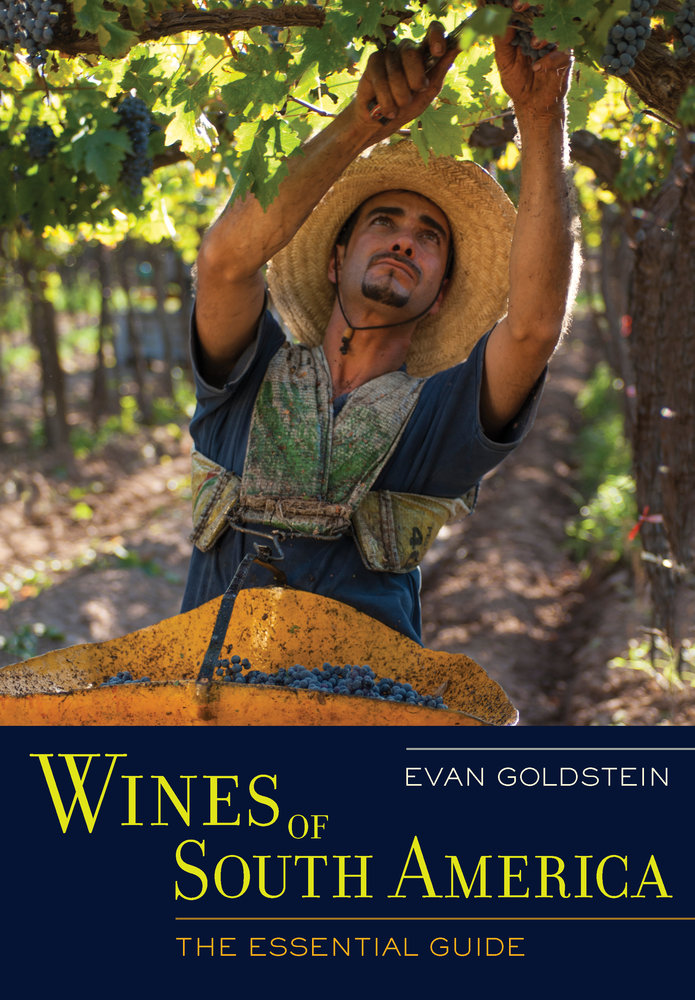“I fell in love with Marselan, one of my favorite grapes, in Brazil,” wrote Evan Goldstein in Wines of South America: The Essential Guide. I wanted to know more and asked Goldstein, the Chief Wine Officer of Master the World, head of Full Circle Wine Solutions and a Master Sommelier, a few questions. This is the second post in the series Marselan Q&A.
Could you tell us the what, when and where of the Brazilian Marselan that held such appeal?
I learned of Marselan on my first trip to Brazil in 2010 – yes, really, 11 years ago. Until then, and in spite of the variety’s naissance and existence in France, it was not on my radar.
I had a few examples when visiting wineries in the Serra Gaucha – most notably at Perini — in Vale Trentino, more specifically in Farroupilha, at 2,600 feet, which is also the source of the best and close to 50 percent of the country’s Muscat.
Their take as well as that of Flavio Pizzato literally exemplified what the creation of the cross was supposed to be all about—the flesh and juiciness of Grenache with the complexity and architecture of Cabernet Sauvignon.
(In his book, Goldstein wrote thbat, “Marselan has the creamy, fleshy texture of Grenache along with the peacock’s-tail complexity of Cabernet Sauvignon, which also imparts a trace of tannin to the mix. It has a little of everything: tasty red-cherry fruit, a somewhat flashy mouthfeel, and soft but discernible tannins.)
You’ve tasted Marselan from elsewhere in South America. What regional differences do you find?
I think that a combination, now, of vine age and experience has Brazil out front. That said, on my last trip to Uruguay I was struck by how many pure 100 percent Marselan there were in addition to the implementations in blends.
While I think the most successful examples of Marselan were then to date in cuvees, most notably in Familia Deicas’ Prelúdio, there are more on the horizon. I had a lovely very polished example at Garzón winery in Maldonado and the bottling by Viña Traversa is also more in line with what I had in Brazil. I heard there are rumblings about planting some in Bolivia as well.
There’s debate as to whether Marselan is for single varietal wines or for blending. What’s your take on this?
I think it has been shown to be delicious both ways. The pure examples at Perini, Pizzato, Casa Valduga and Garzon all demonstrate its inherent ability to be a standalone. But it’s capability of adding succulence and structure means it can be an essential blending grape as in Deicas’ Perdludio.
And from what I understand, this has been a primary role for the grape in China to date. Rumor has it that it is being planted in California’s North Coast now but I am still trying to discover where and why. And there is also, of course, how it is utilized in Bordeaux in a few years [now that is has been officially approved as a grape for that region].
When you open a bottle of Marselan, what foods come to mind as possible pairings?
I think that since it’s so new to most people, think about what you would have with a slightly leaner version of a Rhone wine Merlot and you’ll be in the right orientation.
If you could only open one Marselan, from among all those you tasted, which would you pick and why?
Hmm—one of the Brazilian wines. Perhaps Perini’s for its sheer approachability and deliciousness, leaning into its Grenache parentage. But Pizzato’s Marselan demonstrates aspirations of what the grape can be. Tough question.


